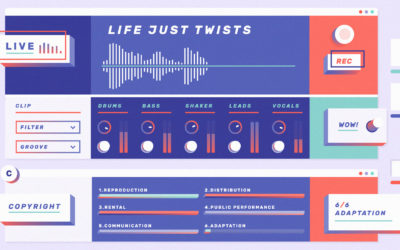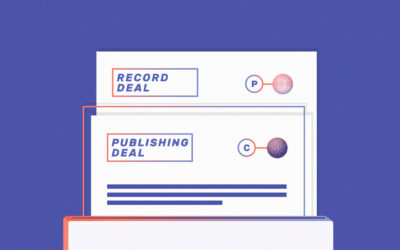1. WHAT CONSTITUTES A SONG? COPYRIGHT WORKS IN A SONG
A song is the combination of melody and words. Each is protected by copyright: the melody as a musical work and the lyrics as a literary work. One or the other could be used separately and still be protected. In the video, Tina is the author of the melody (composer) and Benjamin is the author of the words (lyricist).
The song is protected by copyright once it has been ‘fixed’ in a form that can be copied, such as being written down or recorded. It has to be original in the sense of not having been copied from elsewhere (see Track 2). Copyright enables the authors to control the use of their work: who uses it and how.
Copyright prevents people from
- copying the protected work (the reproduction right)
- distributing copies of it, whether free of charge or for sale (the distribution right)
- renting or lending copies of the work to the public (the rental right)
- performing, showing or playing the work in public (the public performance right)
- communicating the work to the public, including putting it on the internet (the communication right)
- making an adaptation of the work (the adaptation right).
Copyright ensures that if anyone wants to do any of the things listed above with Tina and Ben’s song, they first need to get permission from both of them. Each of the writers of a song has those rights, regardless of how much or little they contributed to it. Since Tina and Ben are co-authors of the song, copyright in both elements of the song (the melody and the lyrics) will last for 70 years after the death of the last surviving author. This is the case in the UK and many other countries, but copyright is not identical in all territories. For more information about copyright duration, see Copyright Bite #1.
More Tracks
2. Protecting your song
Copyright law protects against copying so the song must be ‘original’ and in some ‘fixed’ form (that could be copied). Tina and Ben could fix the song by recording it on a mobile phone or any other means of doing so, e.g. by writing it on a piece of paper.
3. Sound Recording Rights
The copyright in a sound recording is different from the copyright in a song in a number of significant ways.
4. Publishing and Recording Deals
Traditionally there are two main types of contracts or ‘deals’ musicians are likely to seek in order to reach a wider audience: a music publishing deal and a record deal.
5. Self-release: distributing music directly to the public
In the digital age many costs involved in recording and marketing music have been significantly reduced by the availability of affordable, accessible technologies.
6. Public Performance, Royalties and Collecting Societies
To reduce transaction costs for rights holders and rights users alike, collecting societies have been established in order to collectively negotiate and issue blanket licences to users, and to collect and distribute royalties to rights holders.
7. Licences
Aside from lyrics and melody of the song, and the recording of the music, copyright also subsists in the script, the artwork, the voiceover and the film/video itself.














